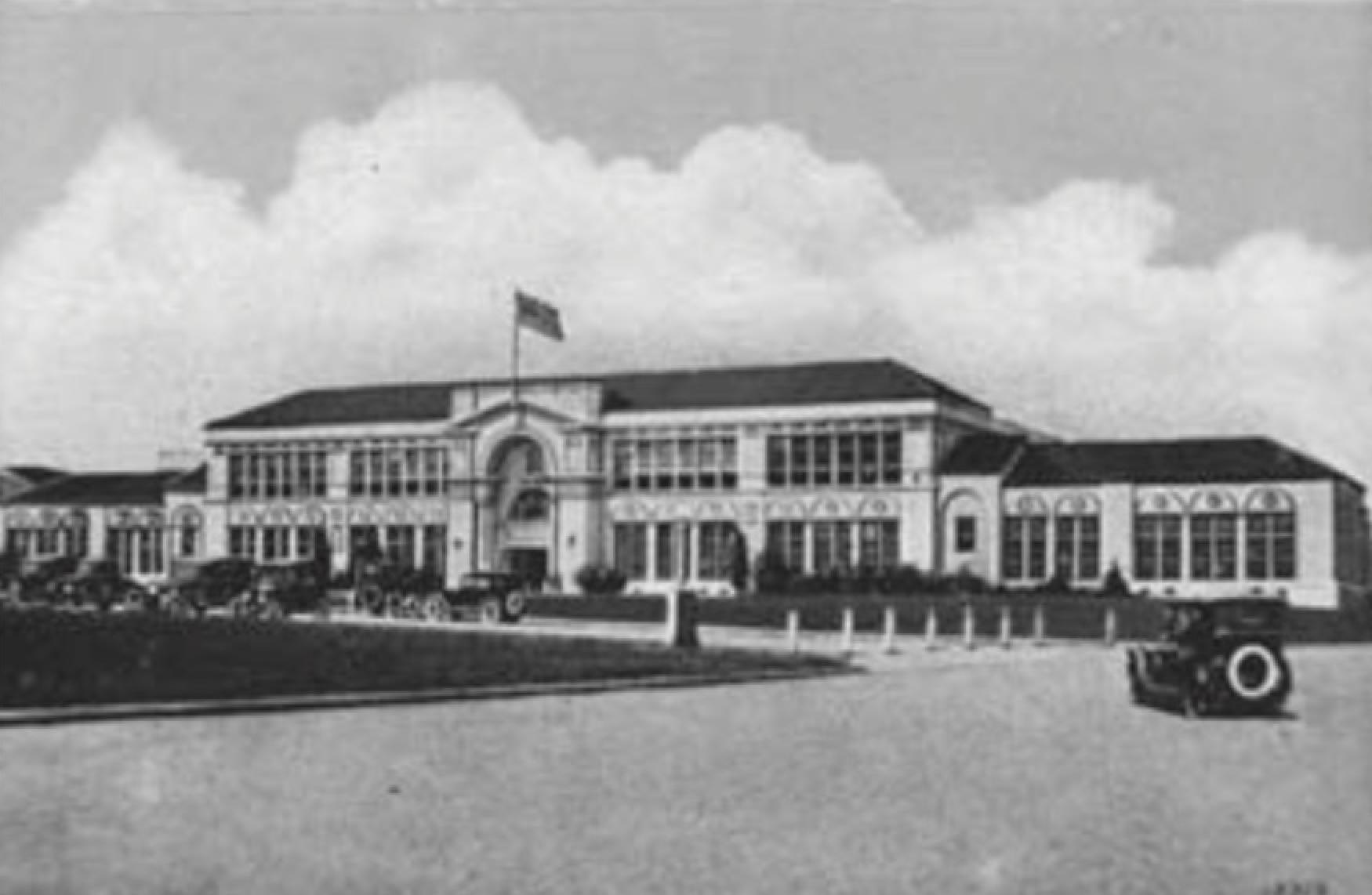
History of Torrance High School
From the Introduction of Lori Spradlin's book, Torrance High School
Situated on nine acres today, the initial building consisted of 10 rooms, 7 of which were used for classrooms. Designed by Robert Allen Farrell in the Beaux-Arts style, the building cost about $34,300. When the school opened on September 11, 1917, the student body consisted of only 19 students in the high school classes, including two seniors. Thomas Elson, who had been administering the schoolhouse on Cabrillo Avenue, served as principal. The student population grew significantly in just a few short years, justifying more classroom space. The main building, as it is known to most, was designed to accommodate additions, including the 1921 rear addition designed by E.H. Cline. This addition included a patio with a small tiled fountain. By 1923, two additional buildings were added on either side of the main building. The home economics wing and auditorium were connected to the original wing with symmetrical colonnades. As the population of high school students continued to increase, it was decided that another building would be needed to house the elementary-aged children. Cline designed a two- story L-shaped building with a cafeteria forming the bottom of the L. Opened as Torrance Elementary, this building remained an elementary school until 1963, when it was annexed by Torrance High School.
While those first six years formed the foundation of Torrance High, it was not until 1923, when the elementary students got their own building, that Torrance High was able to carve out its own identity. It is thought that the class of 1923 changed the school colors from red and gray to maroon and gray and chose the Tartar as the mascot. By 1922, students were publishing a small newspaper called the Tentacle. In 1926, the student body published its first yearbook, The Torch. That same year, the school newspaper was changed to the Torrance News Torch to better connect with The Torch. Other buildings were added to the campus, including a gymnasium and a print shop, whose responsibility it was to print the yearbook and newspaper, thereby contributing to the unique character of Torrance High.
Both nature and a growing population resulted in additional changes to the campus. Just before six o’clock on the evening of March 10, 1933, an estimated 6.4-magnitude earthquake shook the community. Centered in Long Beach, the quake caused significant damage to the campus.

The auditorium was so severely damaged that, along with the colonnade connecting it to the main building, it had to be torn down. Some classes were temporarily housed in tents. For many years, Tartars referred to the area where the original auditorium stood as the “sunken garden.” As part of the Works Progress Administration, a new auditorium was constructed in 1938 near the site of the original. Called the Assembly Hall, the new auditorium served as the only space large enough in the city to host civic events.
In the years following World War II, the population of the city of Torrance grew significantly. Active members of the community like Evelyn Carr, argued that the city of Torrance should have its own district. In 1947, voters in Torrance chose to remove themselves from the auspices of Los Angeles’s school district and form Torrance Unified School District. Much of this population growth may be attributed to the aerospace industry, which was a predominant part of the southern California economy through the 1950s to the 1980s. According to population statistics at the Torrance Historical Society Museum, the population of Torrance in 1940 was 9,950. In 1955, that population had grown to 67,459. A year later, the population reached 82,238.
Click here to read the full version from Lori Spradlin's book, Torrance High School

